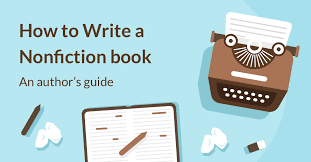Non-fiction writing can be a daunting task, especially if you’re not used to writing in a formal and structured manner. However, with the right approach, it can be a simple and enjoyable process. In this article, we’ll explore a step-by-step guide to writing non-fiction.
Step 1: Choose a Topic
The first step in writing non-fiction is to choose a topic. Consider what you’re passionate about or what you have expertise in. You can also explore trending or popular topics that are relevant to your target audience. Once you’ve chosen a topic, research it thoroughly to gain a deep understanding of the subject.
Step 2: Determine Your Purpose
Once you’ve chosen a topic, determine your purpose for writing about it. Are you looking to educate, inform, persuade, or entertain your readers? This will help guide your writing and ensure that your message is clear and effective.
Step 3: Develop an Outline
An outline is a roadmap that guides your writing and helps you stay on track. Begin with an introduction that includes your main idea and a thesis statement. Then, create several subsections that support your thesis statement, and include evidence and examples to back up your points. Finally, conclude your piece with a summary of your main points and a call to action, if appropriate.
Step 4: Conduct Research
Conduct research to support your arguments and provide evidence for your claims. This may involve reviewing existing literature or conducting original research. It’s important to cite your sources correctly and provide accurate information to establish credibility and build trust with your readers.
Step 5: Write Your First Draft
With your research and outline in hand, it’s time to begin writing your first draft. Write in a clear and concise manner, using simple language and avoiding jargon or technical terms that may be confusing to your readers. Focus on providing value to your readers by communicating your ideas clearly and effectively.
Step 6: Revise and Edit
Once you’ve written your first draft, it’s time to revise and edit your work. Read through your writing and look for areas where you can improve your message or clarify your points. Check for grammar and spelling errors, and make sure your writing is free from typos and mistakes.
Step 7: Get Feedback
Before publishing your work, it’s a good idea to get feedback from others. Share your work with friends, family, or colleagues and ask for their input. This can help you identify areas where your writing could be improved and ensure that your message is clear and effective.
Step 8: Publish and Promote
After you’ve revised your work and received feedback, it’s time to publish and promote your writing. Consider publishing your work on a blog, social media platform, or industry publication. Share your work with your target audience and promote it through social media or other channels to increase visibility and engagement.
Non-fiction writing can be simple and straightforward if you follow these steps. By choosing a topic, determining your purpose, developing an outline, conducting research, writing your first draft, revising and editing, getting feedback, and publishing and promoting your work, you can create a piece that communicates your message clearly and effectively. Remember to focus on providing value to your readers and to always be open to feedback and new ideas.





